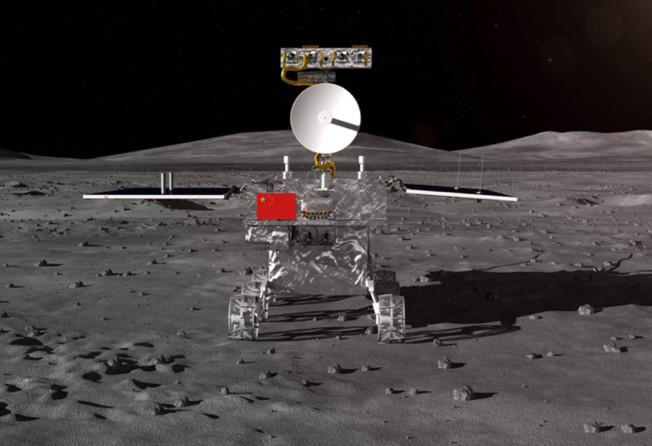China’s Chang’e 4 spacecraft to try historic landing on far side of moon ‘between January 1 and 3’
- Smithsonian Institution in the US estimates time of world’s first attempt to soft-land on the moon’s lesser-known side
- Ground control in Beijing adjusts probe’s orbit and tests rover’s capabilities before the landing, Chinese space administration says

China’s lunar lander and rover spacecraft Chang’e 4 could make humankind’s first attempt to soft-land on the far side of the moon between Tuesday and Thursday, after entering a planned orbit on Sunday morning.
China’s space agency said its control centre in Beijing would choose a suitable time to try the landing, but the Smithsonian Institution, the American museums and research centres group, reported that the craft was expected to set down on the Von Kármán crater landing point between January 1 and 3.
The moon lander was launched at the Xichang Satellite Launch Centre in southern China on December 8 on a Long March 3B rocket and entered lunar orbit four days later.
The far side of the moon – also known as the dark side because it faces away from Earth – remains comparatively unknown, with a different composition from sites on the near side where previous missions have landed.
Soft-landing on the far side is challenging because any direct communication between the rover and Earth will be blocked by the other hemisphere.
To solve that problem, China launched a relay satellite, Queqiao, or Magpie Bridge, between Earth and the moon. Operating about 400,000km (250,000 miles) from Earth, Queqiao will pass on signals to the lunar lander and rover of Chang’e 4.
According to the China National Space Administration, ground control in Beijing has adjusted the probe’s orbit twice and tested the communication link between the probe and the relay satellite Queqiao. The moon rover’s imaging tools and ranging detectors have also been tested for the landing.
The administration said Chang’e 4’s scientific tasks included astronomical observation using low-frequency radio, surveying the terrain and landforms, detecting the mineral composition and shallow lunar surface structure, and measuring neutron radiation and neutral atoms, to build up an understanding of the environment on the moon’s far side.
The launch of Chang’e 4’s lander and rover marked the completion of the second phase of the Chinese Lunar Exploration Programme (CLEP), one of 16 key technologies identified by the Chinese government.
China will launch a returnable spacecraft called Chang’e 5 by 2020, under the third and final phase of the plan. Chang’e 5 will include a lunar lander and a rover that could return to Earth after collecting samples and performing surveys on the planet’s satellite, according to the CLEP.
Before Chang’e 4 came Yutu, the lunar rover of Chang’e 3, which landed on the moon in December 2013. But Yutu, or Jade Rabbit, stopped moving due to a mechanical problem about 40 days after touching down.
“The design of the Chang’e 4 lunar rover has been improved based on the previous one, meaning it could work for at least a few years on the moon,” Wu Weiren, the CLEP’s chief designer, said in August.